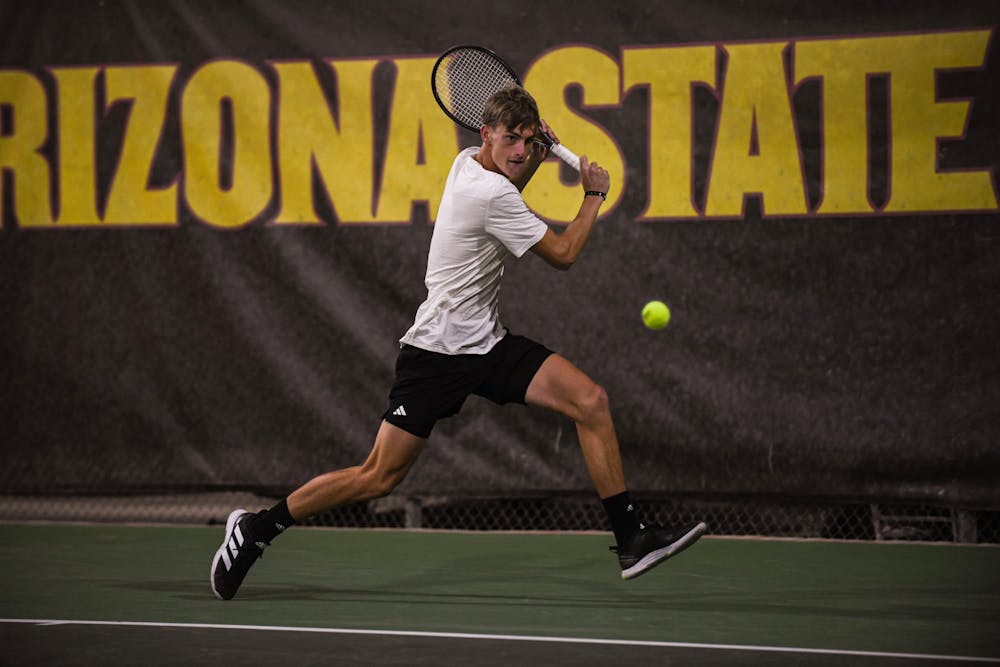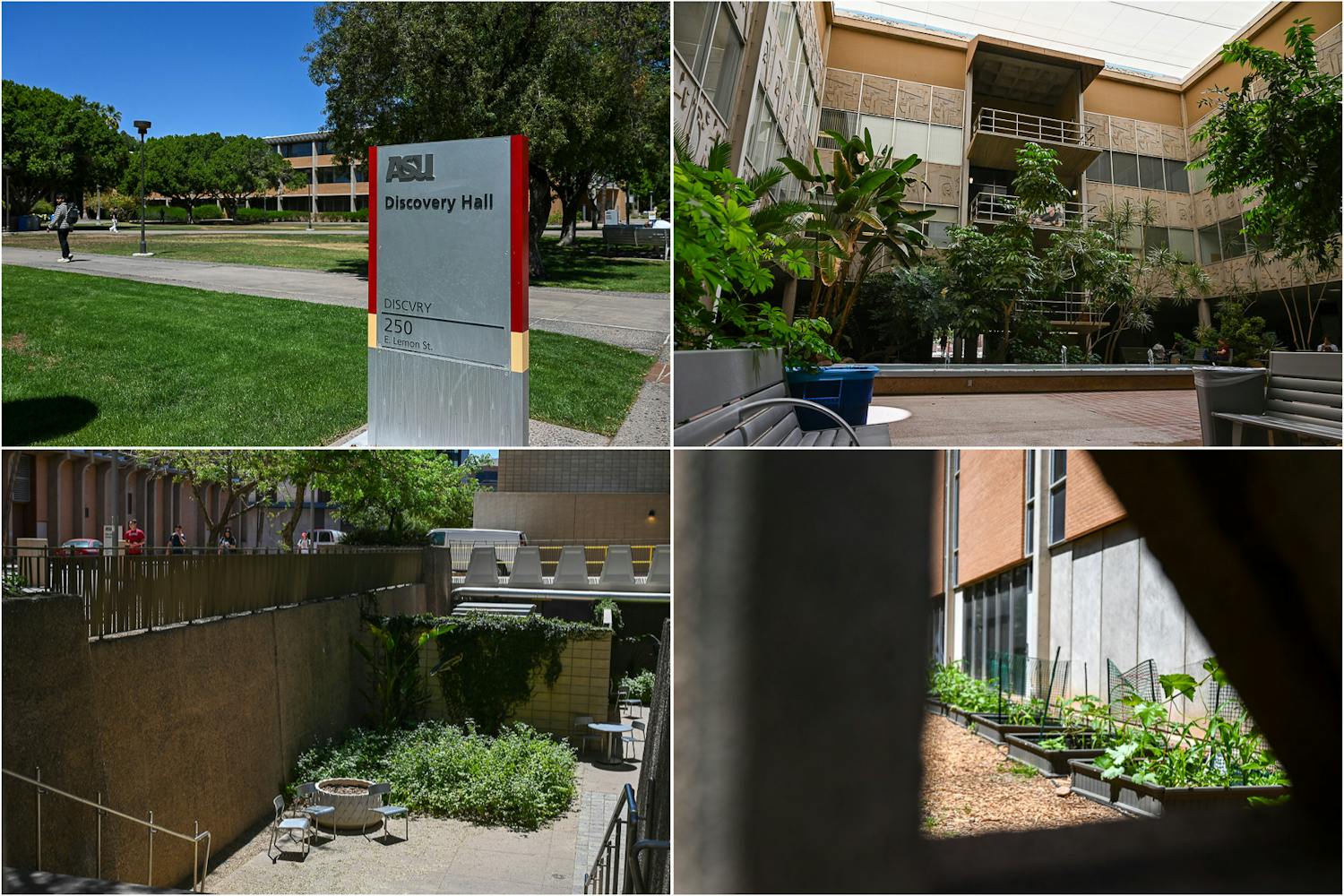Bor Artnak flew from Slovenia to Tempe just days before his opening match for ASU men’s tennis. His decision to travel from a small Balkan country of just 20,000 square kilometers to the blistering hot desert in America’s southwest will be one of the riskiest and most consequential of his career.
Nothing about Artnak’s situation in Tempe boded well on paper. He had never played in a team environment before. He had never competed alongside or against teams and had nothing beyond a personal coach.
The infrastructure of college tennis was about as foreign to him as the new environment he now called home. However, as college tennis fans who have paid attention have learned, Artnak has a way with timing. He knows how to perform his best consistently in the knick of time.
That trait has allowed his play to skyrocket with the Sun Devils despite his only involvement with the team for three months. Since joining ASU, Artnak has had a team-high eleven singles wins and only two losses, placing as high as 74 in the Intercollegiate Tennis Association singles rankings.
In doubles, he’s won ten total matches alongside his partner senior Max McKennon, ranking as high as 14th in the ITAs. And in the team environment, Artnak has only earned praise from his coaches as a vocal leader.
Artnak’s quick success is astonishing to anyone unfamiliar with his background, but anyone who knows his game shouldn't be surprised. After all, Artnak is entering the collegiate tennis world as a solidified professional—he’s been at this level for a long time. Americans are just starting to notice now.
Before coming to ASU, Artnak shined on the pro tour. He was ranked as a top-ten junior in the world for his age and even cracked the top 400 rankings after he reached the quarterfinal of a challenger event.
"Bor is one of the best coming into college tennis this year, if not the best player coming into college tennis," head coach Matt Hill said.
When listing Artnak’s strengths, his coaches have a lot to say: He’s great at returning forehands, a hilarious presence in the locker room and seemingly always gets better as matches go on.
These qualities have a common theme — they’re predicated on time.
Regarding his forehand, Artnak can return from a wide array of angles. No matter where the ball is, he knows precisely where and, most importantly, when to make contact. This allows Artnak to produce several highlight shots.
"The reason he's so versatile is his timing is so good," Associate head coach Dominic Cotrone said. "Timing is so important in tennis because it allows you to hit the ball simultaneously within your stroke, regardless of how fast the ball is coming at you. He has this natural ability to time the ball on fast courts, slow courts, opponents that hit high or opponents that hit fast."
Artnak also has an uncanny ability to control the mood of the locker room. When he senses his teammates are stressed, he can crack a joke, make everybody laugh, and bring that level back down. And when he senses the locker room is not focused enough, he knows how to bring motivation levels back up.
He understands when it’s time to lock in and when it’s time to joke.
The three-month freshman he only gets better as matches go on. In the six three-set matches Artnak has competed in this season, he’s won them all. In his eyes, his ability to adapt throughout every match separates him from other players.
"I can read the game throughout and get better by finding the patterns that work for me and finding the patterns that my opponent doesn't like," Artnak said. "That's one of the skills I'm great at."
Nothing ever sweats Artnak when crunch time arrives. Screaming, bad calls, heckling fans, points going left and right — It’s all for naught. He stays unphased.
"The biggest strength that Bor has on the court is he’s able to be super calm amongst the chaos of a college tennis match," Cotrone said. "He’s probably better at that than anybody I've seen."
Artnak’s track record is nearly perfect when it comes to timing, but that doesn’t mean his game is fully polished yet. One clear aspect of his game that ASU's staff can develop is his serve.
His serve can get significantly better. More specifically, it can get way faster.
"I came here with not the best serve," Artnak said. "But I’ll be able to put a lot of miles per hour on that serve with training."
READ MORE: How an emphasis on player development sets ASU men's tennis apart
What allows Artnak to put more speed on his serve is his build. His physical attributes indicate deadly-serve potential: He's long, tall, slim and a good athlete, so you would think his serve should be one of the best parts of his game.
However, that's not the case.
Whereas most tennis players of his caliber get two to three points a game off of their serve, Artnak may get one point a game and sometimes even zero while still winning most of his matches.
"We as coaches look at his game and say if his serve became his greatest weapon, if we’re able to make this serve his greatest strength, then his game would really go to the next level because he's been able to perfect the other parts of his game," Cotrone said.
If he can improve his serve and, more importantly, the speed of his serve, Artnak will have fully mastered the art of timing, and his overall game will skyrocket. According to Hill, if everything goes right with the development of his serve, limitless potential is an understatement — Artnak will be at the top of his game in no time.
"He's going to be a professional tennis player," Hill said. "You're going to watch this guy on TV, one hundred percent. He's going to be playing in tournaments like the grand slams that you watch on ESPN."
Edited by Vinny DeAngelis, Walker Smith and Shane Brennan.
Reach the reporter at jwkartso@asu.edu and follow @kartsonis3 on X.
Like The State Press on Facebook and follow @statepress on X.
Jack is a sophomore studying sports journalism. This is his second semester with The State Press. He has also worked at other student journalism organizations.




